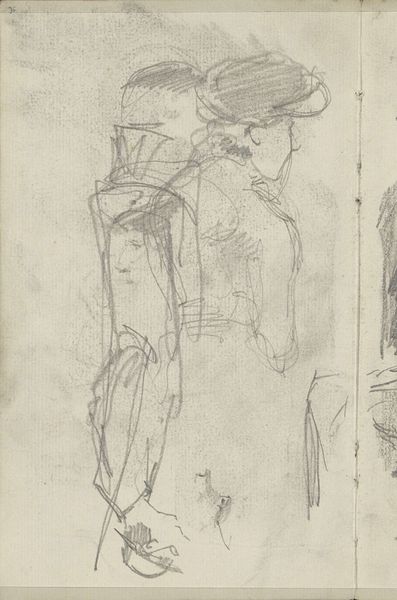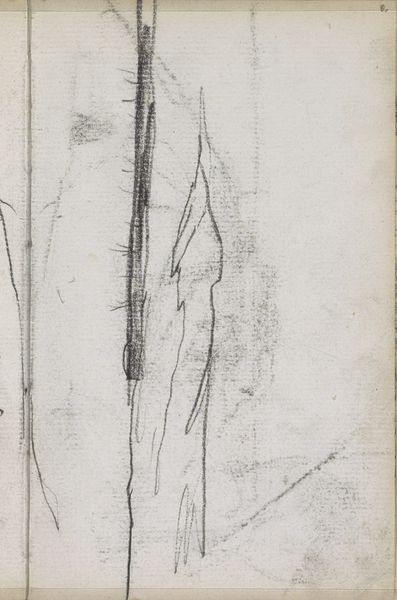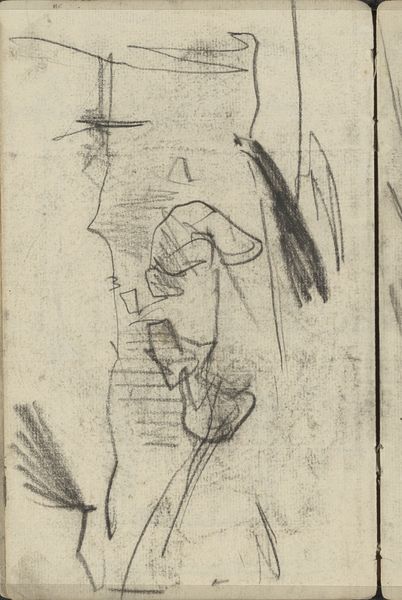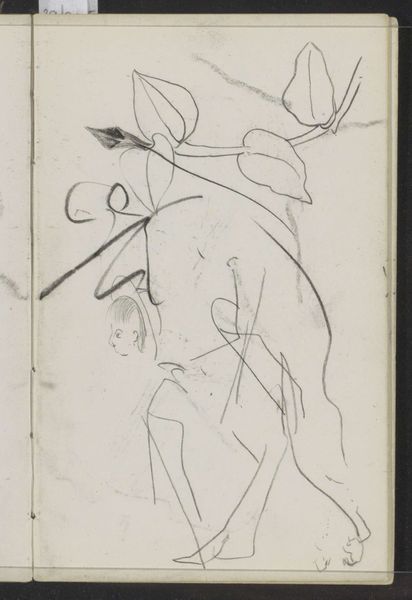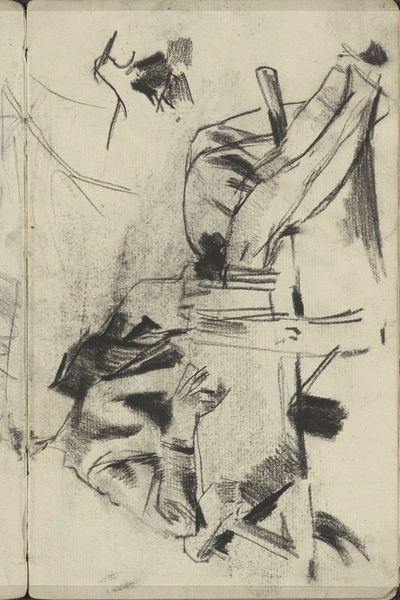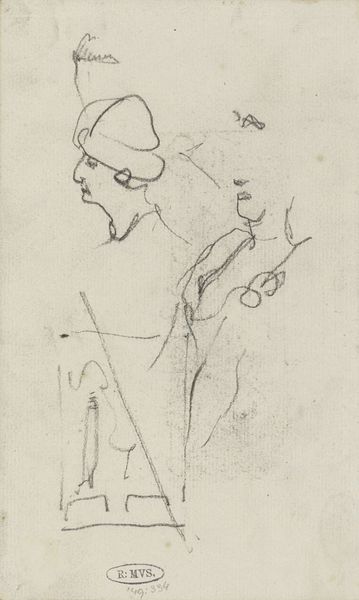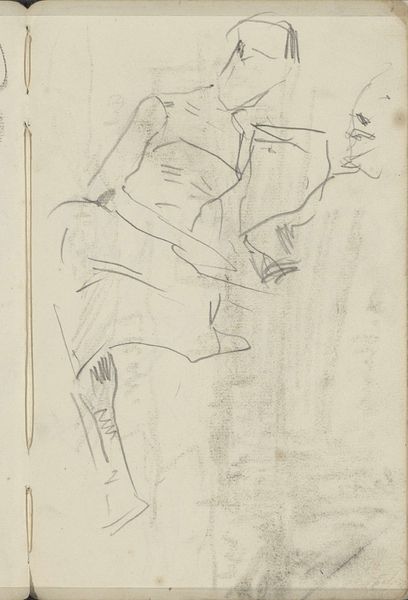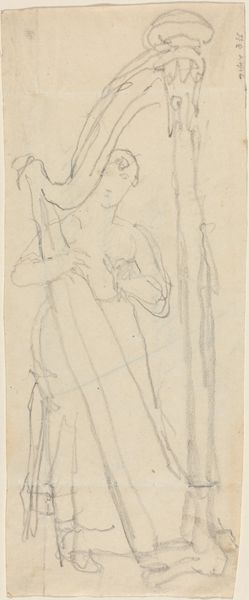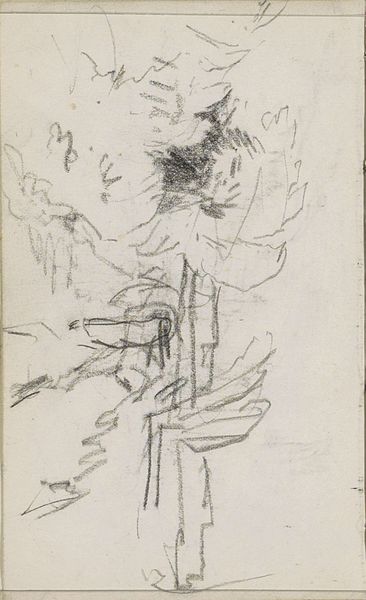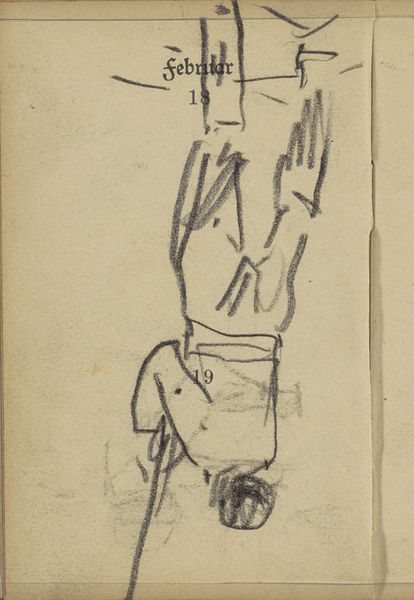
drawing, paper, pencil
#
portrait
#
drawing
#
impressionism
#
landscape
#
paper
#
pencil
Copyright: Rijks Museum: Open Domain
Curator: This is George Hendrik Breitner's "Staande vrouw," created around 1882. It's a drawing rendered in pencil on paper, currently held at the Rijksmuseum. Editor: Immediately, I’m struck by its raw, almost unsettling directness. There’s a fragmented quality to the sketch, like a memory being pulled from the depths. The use of pencil gives it an intimate, almost fragile quality. Curator: Absolutely. Breitner was deeply embedded in the urban fabric of Amsterdam. This drawing is less about idealized beauty and more about capturing the fleeting essence of working-class women he encountered daily. Consider the accessibility of the medium. Pencil on paper meant immediacy; capturing observations with swiftness, reflecting a democratized means of art production. Editor: I notice the hatching technique, how he uses the varying pressure and direction of the lines to define the form. Look at the rapid strokes forming the legs compared to the darker smudging around the torso and face; it draws the eye directly. The nose sketch almost floating nearby invites semiotic engagement; what narrative do the sketches propose? Curator: Precisely. It prompts us to consider not only the subject's identity but also Breitner's method of production. Was this study for a painting, or a work in itself? These drawings were his visual notes on Amsterdam life and labour. The very ephemerality of pencil aligns with impressionism. It moves away from portraying bourgeoise refinement, reflecting how technological innovations impact artistic styles, offering new possibilities. Editor: The woman's face seems partially obscured, rendered with minimal detail, almost a mask. This lends a certain anonymity, emphasizing the universal rather than the individual. The pose is quite intriguing, very simple. What statement did Breitner propose about his contemporary culture by producing this work? Curator: In the context of his time, it disrupts conventional portraiture. Breitner used photography extensively; those sources, combined with studies like this, allow an uncensored window to his practice of labour. Through photography and the production of rapid sketch drawings, there are interesting juxtapositions being explored. The emphasis on these quick observations represents modern alienation. Editor: Ultimately, its incompleteness is perhaps its most compelling feature. The rough sketch almost compels a participatory process with the viewer's imaginative act. These incomplete components, these glimpses that challenge tradition, really make "Standing woman" thought-provoking. Curator: Yes, Breitner gives the viewer a moment, raw and unsentimental, captured in pencil. It allows the viewer insight into not just the product, but Breitner’s working processes of that moment in 1882.
Comments
No comments
Be the first to comment and join the conversation on the ultimate creative platform.
